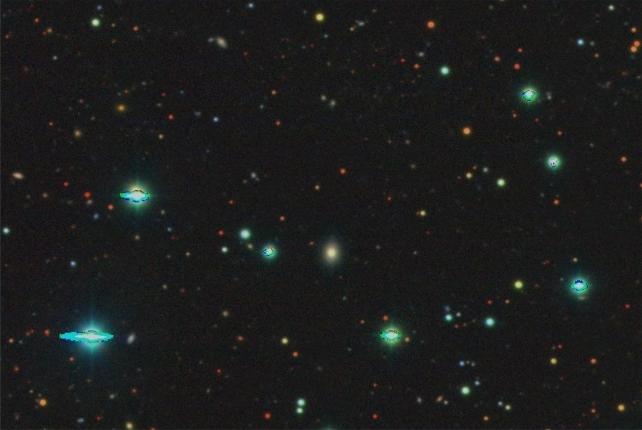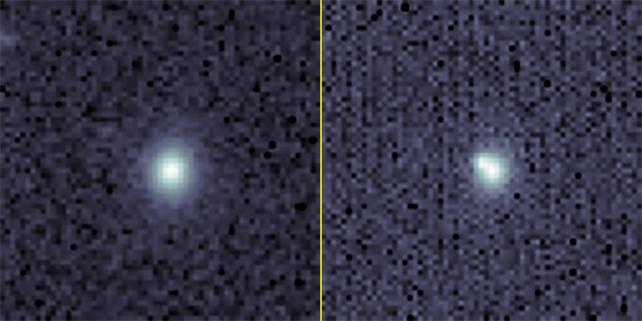For the primary time, artificial intelligence (AI) has looked for, detected, confirmed, categorized, and introduced a supernova discovery with none human intervention.
A global crew of scientists developed a brand new AI software referred to as Vibrant Transient Survey Bot (BTSbot), utilizing over 1.four million photographs from almost 16,000 sources to coach its machine-learning algorithm.
Northwestern College experiences that the brand new system permits automation of all the star explosion discovery course of, which not solely eliminates human error but additionally dramatically will increase pace.
“In the end, eradicating people from the loop supplies extra time for the analysis crew to investigate their observations and develop new hypotheses to clarify the origin of the cosmic explosions that we observe,” says Northwestern astronomer Adam Miller, one of many lead researchers within the improvement of BTSbot.

“This considerably streamlines massive research of supernovae,” adds Northwestern’s Nabeel Rehemtulla, an astronomer who co-led the event with Miller, “serving to us higher perceive the life cycles of stars and the origin of parts supernovae create, like carbon, iron and gold.”
BTSbot detected the newly found supernova named SN2023tyk in information from the Zwicky Transient Facility (ZTF), a robotic digicam in California that scans the northern sky each two days.
To place the tempo into perspective, ZTF imaged the cosmic blast within the evening sky on October 3, and BTSbot discovered the supernova in ZTF’s information on October 5. Upon speaking with different robotic devices, the BTSbot was capable of verify the invention and classify the occasion as a Type Ia supernova, publicly sharing the report on October 7.
“The ZTF has been working for the previous six years, and, throughout that point, I and others have spent greater than 2,000 hours visually inspecting candidates and figuring out which to look at with spectroscopy,” says astronomer Christoffer Fremling from the California Institute of Know-how (Caltech).
“Including BTSbot to our workflow will eradicate the necessity for us to spend time inspecting these candidates.”

Although supernovae are bright and energetic events, they don’t seem to be that frequent, or easy to identify. Conventional strategies of detection depend on astronomers to visually examine massive volumes of knowledge from robotic telescopes that repeatedly scan the evening sky for brand spanking new sources of sunshine.
“Automated software program presents a listing of candidate explosions to people, who spend time verifying the candidates and executing spectroscopic observations,” Miller explains.
“We will solely definitively know {that a} candidate is really a supernova by amassing its spectrum – the supply’s dispersed gentle, which reveals parts current within the explosion.”
This can be a time-consuming course of, and it is estimated that astronomers have solely found a small fraction of all supernovae that happen within the Universe.
BTSbot mechanically requested one other robotic instrument referred to as the Spectral Power Distribution Machine (SEDM) to conduct in depth observations of the potential supernova with the intention to acquire its spectrum. After acquiring this spectrum, SEDM despatched it to Caltech’s SNIascore (developed by Fremling) to categorise the supernova.
frameborder=”0″ permit=”accelerometer; autoplay; clipboard-write; encrypted-media; gyroscope; picture-in-picture; web-share” allowfullscreen>
Type Ia supernovae are particularly important to astronomers as a result of they can be utilized to measure the expansion of the Universe.
“The simulated efficiency was wonderful, however you by no means actually understand how that interprets to the real-world till you really strive it,” says Rehemtulla. “As soon as the observations from SEDM and the automated classification got here in from SNIascore, we felt an enormous wave of aid.”
The flexibility to scan the night sky for brand spanking new objects way more effectively and successfully may permit discovery of many new supernovae. BTSbot may unlock astronomers to concentrate on interpreting the data and offering helpful insights into the evolution of stars and galaxies.
“As soon as all the pieces is turned on and dealing correctly, we do not really do something,” says Rehemtulla. “We fall asleep at evening, and, within the morning, we see that BTSbot, and these different AIs unwaveringly do their jobs.”






